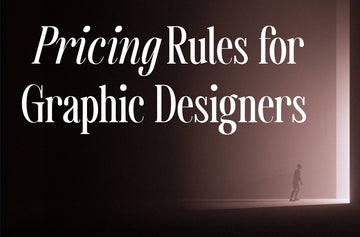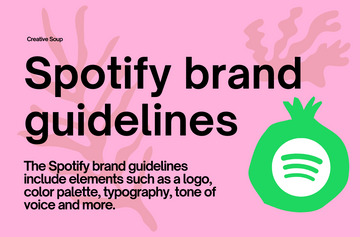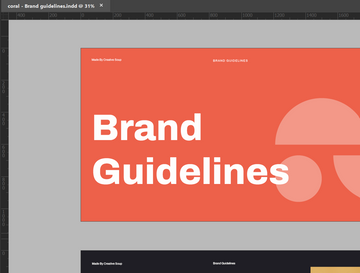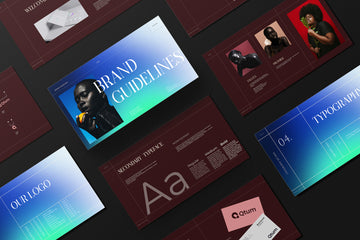Introduction
Graphic designers are essential professionals who bring creativity and visual appeal to communication materials used by businesses and individuals. One of the most challenging aspects for graphic designers is determining how much to charge for their design services. Proper pricing is crucial to ensure fair compensation for designers' skills and expertise while meeting clients' budgets and expectations. In this article, we will explore various pricing rules that graphic designers can adopt to set their rates effectively.
Understanding the Importance of Pricing in Graphic Design

Pricing plays a critical role in the success of graphic designers and their business. It not only impacts the designer's income but also influences how potential clients perceive their services. The right pricing strategy can attract clients, foster long-term relationships, and position the designer as a valuable asset to their clients' ventures.
Types of Pricing Models for Graphic Designers
-
Hourly Rate :This traditional pricing model involves charging clients based on the number of hours spent on a project. The hourly rate can vary depending on factors like experience, location, and complexity of the task.
-
Project-Based Pricing : A flat fee is agreed upon for the entire project, making it suitable for well-defined tasks with clear scopes and timelines.
-
Package Pricing: Designers offer a set of services as a package with a fixed fee. Clients who need multiple design services find this predictable cost appealing.
-
Retainer Pricing : Clients pay a monthly fee for a predetermined number of hours, ensuring designers are available when needed for ongoing projects.
-
Value-Based Pricing : The designer's fee is determined by the value their work brings to the client's business. Projects with a direct impact on client revenue or growth command higher fees.
Advantages and Disadvantages of Each Pricing Model
Hourly Rate:
Advantages:
- Transparency: Hourly rates provide a clear breakdown of how the client is billed for the designer's time and effort.
- Flexibility: This model allows for adjustments if the scope of the project changes during the design process.
- Suitable for Small Projects: Hourly rates work well for small and short-term projects with uncertain timelines.
Disadvantages:
- Uncertain Costs: Clients may be wary of uncertain costs, especially if the project takes longer than anticipated.
- Misalignment of Incentives: Clients might feel that the designer is incentivized to work slower to increase billable hours.
Project-Based Pricing:
Advantages:
- Predictable Costs: Clients know the total cost upfront, which helps with budgeting and financial planning.
- Clear Expectations: Well-defined scopes lead to clearer expectations and reduced misunderstandings.
- Efficient for Simple Projects: Projects with clear deliverables are ideal for project-based pricing.
Disadvantages:
- Scope Creep: Designers may face challenges if the project scope expands beyond the agreed-upon deliverables.
- Risk of Underpricing: Setting the right flat fee requires accurately estimating the effort required.
Package Pricing:
Advantages:
- Convenient for Clients: Clients appreciate the simplicity of choosing from predefined packages.
- Upselling Opportunities: Designers can upsell additional services by offering larger or premium packages.
Disadvantages:
- Limited Flexibility: Customization options are limited within predefined packages.
- Not Suitable for Complex Projects: Projects with unique requirements may not fit neatly into packages.
Retainer Pricing:
Advantages:
- Steady Income: Designers benefit from a stable income stream with predictable monthly payments.
- Strong Client Relationships: Retainer agreements foster long-term partnerships with clients.
Disadvantages:
- Time Management: Designers must carefully manage their time to meet the agreed-upon retainer hours.
- Unused Hours: If the client doesn't fully utilize the retainer hours, it may result in lost income.
Value-Based Pricing:
Advantages:
- Client-Centric Approach: This model aligns the designer's success with the client's business outcomes.
- Higher Earnings Potential: The designer can charge premium fees for high-impact projects.
Disadvantages:
- Complex Evaluation: Assessing the direct value of design work can be challenging for both designers and clients.
- Client Education: Clients may need to be educated about the value-based approach to understand its benefits fully.
Factors Affecting Graphic Design Pricing

To determine the appropriate pricing for design services, graphic designers should consider several crucial factors:
Experience and Expertise of the Designer:
A designer's level of experience and expertise directly affects their value in the market. Seasoned designers with a strong portfolio often command higher fees, while newer designers may set more competitive rates to attract clients and build their reputation.
Complexity of the Project :
Projects that require intricate designs or involve multiple deliverables generally demand higher pricing. The more intricate the task, the more time and effort the designer needs to invest.
Time and Resources Required :
Designers should consider the time and resources needed to complete a project successfully. This includes research, revisions, and any expenses for materials or stock photos.
Market Demand and Industry Standards :
Local market demand and industry norms influence pricing. Designers should research the rates charged by competitors to stay competitive while maintaining fair compensation.
Choosing the Right Pricing Model for Your Design Services

Selecting the appropriate pricing model requires a thoughtful assessment of your business goals, target clients, and the type of services you offer. Different projects may call for different pricing approaches, so having multiple options can be beneficial.
Communicating Prices Effectively to Clients
Effective communication is essential when discussing prices with clients. Transparency and clarity are paramount to avoid misunderstandings and ensure both parties are on the same page.
Transparency and Clarity:
Be upfront about your pricing model, ensuring clients understand the billing process and what they'll receive for their investment.
Demonstrating Value to Clients:
Emphasize the benefits and value your design services provide to clients. Highlight past successes and showcase how your designs have positively impacted other businesses.
Handling Negotiations:
Be prepared for negotiations while maintaining a firm understanding of your worth as a designer. Find a middle ground that satisfies both you and your client.
Adjusting Prices Over Time
As a graphic designer, it's essential to regularly assess your pricing strategies and make adjustments as needed. As your skills and reputation grow, it may be appropriate to increase your rates to reflect your increased value in the market.
Best Practices for Setting Graphic Design Prices
Successfully setting graphic design prices involves a mix of research, client understanding, and industry knowledge. Here are some best practices to help you set the right prices for your design services:
Researching Competitor Prices:
Research the pricing of other designers and agencies in your area to get an idea of the industry standards and ensure your rates are competitive.
Considering Client Budgets and Needs:
Be mindful of your target clients' budgets and tailor your pricing to accommodate various budget levels.
Pricing for Long-Term Client Relationships:
Consider offering discounts or incentives for long-term clients to encourage repeat business and foster lasting partnerships.
Avoiding Underpricing and Overpricing
Both underpricing and overpricing can have negative consequences for your design business. Underpricing devalues your work and can lead to burnout, while overpricing may drive potential clients away.
Navigating Pricing Challenges in the Graphic Design Industry
Graphic designers may face various challenges when it comes to pricing their services. Here are some common challenges and strategies to overcome them:
Handling Scope Creep :
Clearly define project scopes and communicate any additional charges for work beyond the original agreement.
Dealing with Difficult Clients :
Set clear expectations from the beginning and establish boundaries to manage difficult clients effectively.
Revising Prices for Existing Clients:
When revising your prices for existing clients, communicate the changes in advance and explain the reasons for the adjustment.
The Future of Graphic Design Pricing
As technology and design trends continue to evolve, graphic design pricing will also see changes. Staying updated on industry trends and client preferences will be key to thriving in this dynamic field.
Conclusion
Setting the right pricing rules for graphic designers is a multifaceted process that requires consideration of various factors. Each pricing model has its advantages and disadvantages, making it essential for designers to choose wisely based on their goals and the needs of their clients. Transparent communication and fair compensation are crucial for building successful relationships with clients and ensuring a prosperous graphic design business.
FAQs
-
Question: How do I determine the best pricing model for my graphic design services? Answer: Assess your target market, the nature of your services, and your long-term goals to select the most suitable pricing model.
-
Question: Is value-based pricing only applicable for large-scale projects? Answer: Value-based pricing can be applied to projects of all sizes as long as they have a significant impact on the client's business.
-
Question: How often should I adjust my graphic design prices? Answer: Reevaluate your pricing strategy periodically, considering factors like experience, market demand, and industry trends.
-
Question: How can I effectively communicate my pricing to clients? Answer: Be transparent and demonstrate the value of your design services to clients. Engage in open discussions and address any concerns they may have.
-
Question: What should I do if a client insists on a lower price than I've quoted? Answer: Be assertive about the value you bring to the project and the fair compensation you deserve. If necessary, consider negotiating a compromise that benefits both parties.
Remember, successful graphic design pricing requires a delicate balance between client satisfaction and fair compensation for your creative expertise. By implementing the right pricing rules and effectively communicating your value, you can build a thriving design business that attracts and retains happy clients.
Read more articles:
Unlock the Secret to Passive Income: 5 Strategies for Designers
3 Brand Guidelines Template Canva, Examples For Consistent Branding
8 Famous Free Fonts Used by Leading Companies





